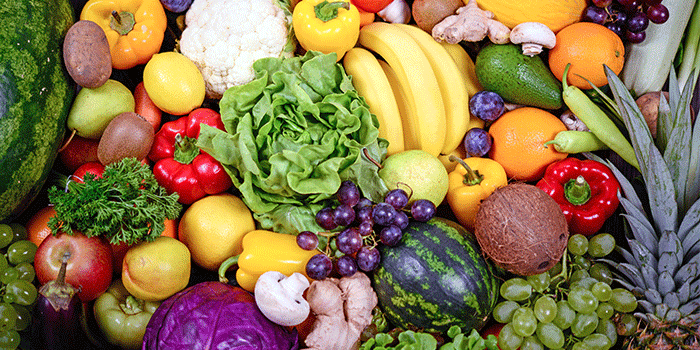Pesticides are often used in the cultivation of fruits and vegetables to control pests, weeds, and fungal attacks. In the EU, however, there are strict rules on the level of pesticide residues allowed in fruit, vegetables, and grain that end up in our shopping carts.
The 2022 pesticide report shows that 79% of all samples of conventionally grown fruit contain pesticide residues. The same applies to 42% of all samples of conventionally grown vegetables and to 29% of samples of conventionally grown grain.
“Pesticide residues have been found in 51% of Danish-produced fruit. For fruit harvested in the rest of Europe, that figure is 86%—and 83% for fruit grown outside the EU,” says Senior Advisor Bodil Hamborg Jensen from DTU National Food Institute.
Fewer pesticide residues in Danish vegetables
Just as in previous years, pesticide residues are found more often in fruits than in vegetables.
“If we look at the average vegetable content in Danish fridges, 20% of the samples from Danish vegetables contain pesticide residues. In the EU, it is 58% of the samples, and outside the EU it is 56%. The pesticide report shows that Danish tomatoes are completely free of pesticides, while residues have been found in 62% of imported tomatoes,” says Bodil Hamborg Jensen.
2,176 samples analysed
The Danish Veterinary and Food Administration and DTU National Food Institute jointly perform checks on pesticide use in Denmark, and examine samples of fruit, vegetables, grain, baby food, and other processed products as well as animal products such as meat, liver, eggs, and honey for pesticide residues.
2,176 samples were checked and analysed for pesticide residues in 2022. The samples were distributed on 255 different types of food products. The control programme includes both objective and suspect sampling.
For 34 of the samples, the assessment was that they posed a health risk or that a health risk could not be excluded. 17 of the samples were objective samples and the remaining 17 were suspect samples.
More than one pesticide is more often found in the same sample of foreign food products compared to the examined Danish products. In 43% of the foreign samples, more than one pesticide was found, whereas this was only the case for 7.5% of the Danish samples.
Pesticide residues have also been found in 3.6% of organic foods, which corresponds to eight samples of the 224 samples of plant origin in the pesticide report.
Pesticide residues generally pose a negligible risk
The researchers closely monitor the total amount of pesticides in our diet to assess whether they pose a health risk, even if they stay within the legal limits.
The assessment from DTU National Food Institute is that the pesticide residues present in food products on the Danish market generally
are unlikely to pose a concern for consumer health.
In the Danish and imported focus crops (carrots, strawberries, tomatoes, pears, apples, and wheat), the share of samples containing pesticide residues has remained fairly stable over the past five years. Fluctuations will occur from year to year, but there is no basis for concluding significant development trends.
Find out more
See the report (in Danish only):
Pesticidrester i fødevarer 2022. Resultater fra den danske pesticidkontrol (pdf)
The annual pesticide report from the Danish Veterinary and Food Administration and DTU National Food Institute is based on control data published regularly in quarterly reports. They will be replaced by the publication of the annual report.
Reports from pesticide control are available on DTU National Food Institute’s website:
Pesticides in the diet.
See also the press release (in Danish) from the Danish Veterinary and Food Administration:
Frugt og grønt under lup: Kun ét dansk æble indeholdt for meget sprøjtemiddel
